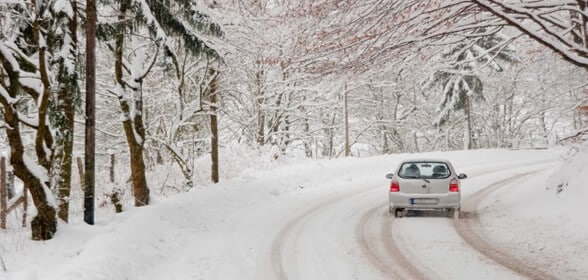
Tips! Winter Driving In North America
North America and Canada have some of the best driving roads in the world and are perfect for a road trip. Summer tends to be the best time if you are considering a road trip, but what if you are coming in winter, touring between ski resorts or simply trying to get to your destination can be a harzardous drive.
For most of us, winter means a chill in the air and a bit of slush on the roads…. In North America and Canada it is much more than that, winters can bring truly awful weather, heavy rain, thick snow, ice and fog. All of which mean driving conditions are dangerous.
Here are some tips for Winter Driving In North America
If you’re new to driving in winter, pretend you’re driving a limo and the passengers in the back have full champagne glasses, if they spill their drinks, you’ll lose your tip!!
- Accelerate slowly and gently, especially after stopping.
- Decrease your speed and leave yourself plenty of room to stop. You should allow at least three times more space than usual beween you and the car in front.
- Brake gently to avoid skidding. If your wheels start to lock up, ease off the brake.
- Decelerate even more slowly and gently, and plan to stop at a point about ten feet closer than you usually would, to give room to slide if the road is slippery.
- Don’t use cruise control or overdrive on icy roads.
- Drive slowly. Don’t drive the speed limit until you feel confident that road conditions warrant it. In very poor winter driving conditions, you will find that almost everyone drives 10/20 mph below the posted speed limit.
- Keep your lights and windscreen clean, to make it easier to see road conditions ahead.
Is It The Right Car
Firstly, is the vehicle you intend to drive upto the job? If I was going to be driving 400 miles from Portland to Whistler then I wouldnt be going in my Alfa Romeo no matter what condition it was in. I would be straight on the phone booking a hire car, preferably something with 4WD or AWD.
Preparing The Vehicle
Is your car set up for the worst scenario? If you are travelling somewhere that has a chance of adverse weather then you and your vehicle should be prepared for it.
- Ensure the tyres are in good condition and are inflated to the recommended pressures.
- Ensure the battery is in good working order.
- Check the brakes & hand brake.
- Check all fluids such as oil, fuel, water and screen wash are topped up.
Overlooking any one of the above could end your journey early and you could potentially find yourself stuck and waiting for a rescue vehicle. So:
Preparing The Passengers
Are you and your passengers prepared for the same scenario? If you are stuck and awaiting rescue then there are basics that you will need.
- Are there enough warm clothes blankets to keep you all warm?
- Is there enough food and drink?
- Do you have a way of contacting someone in an emergency?
The safety of your passengers, yourself and other road users is the most important thing when travelling in adverse weather conditions.
Slow Down! Dont rush, leave with plenty of time to get there.
Assume the worst! When you drive away from your parking spot, take at least five minutes of driving, and preferably 10-15 minutes, to get a feel for the road conditions.
Want in? Subscribe to our newsletter and be in the loop on...
- Discounts / Offers
- Car Hire News
- Travel Guides / Ideas




